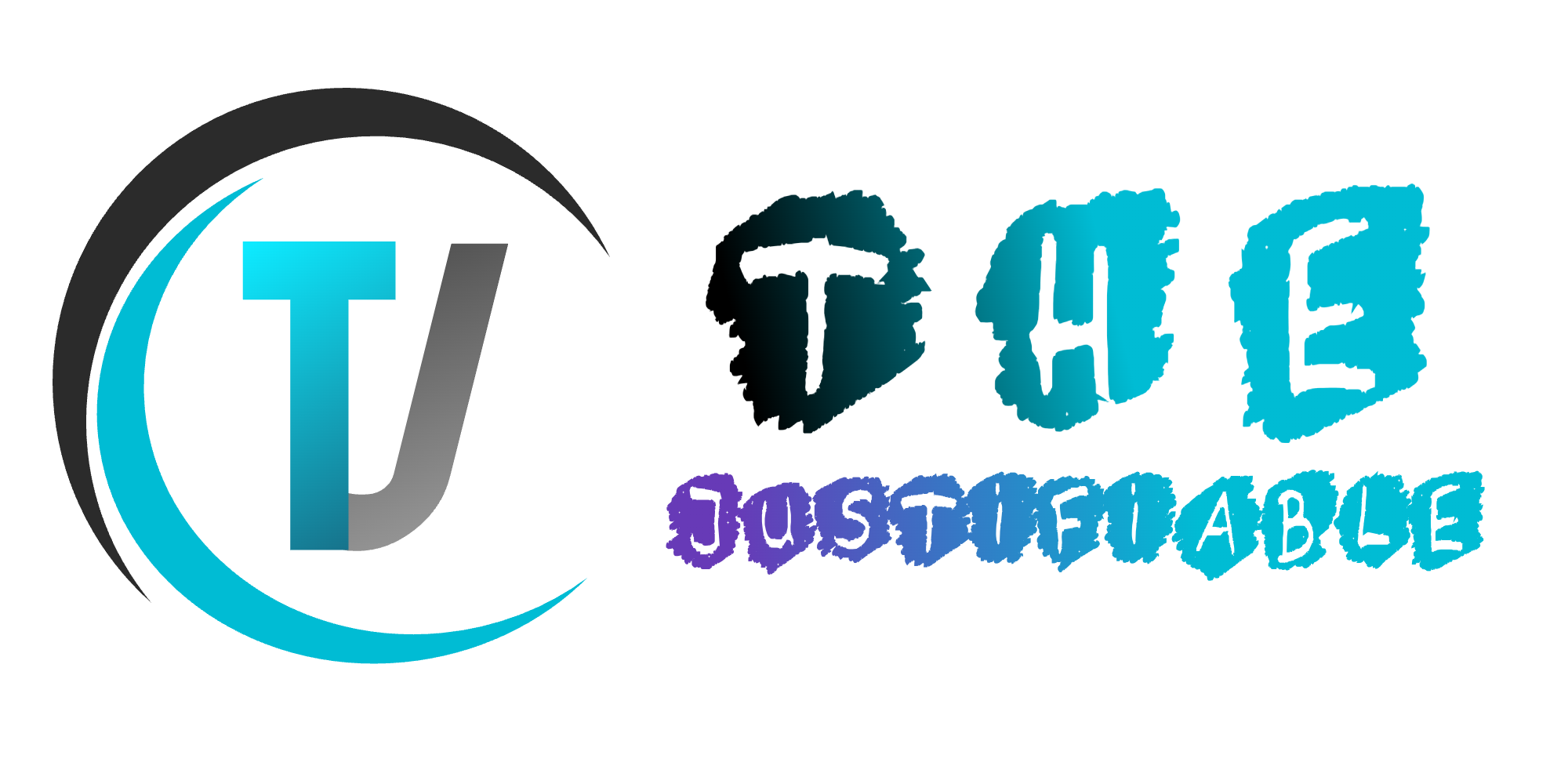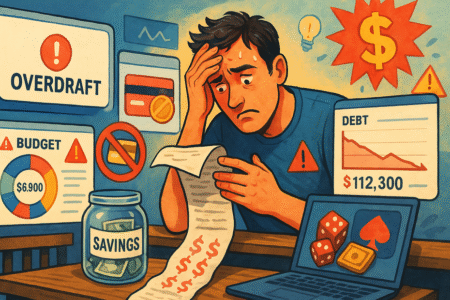Table of Contents
Savings investment can feel overwhelming, especially when you’re not sure where to start or which strategies actually pay off.
The good news is that you don’t need a finance degree to make smart choices with your money. You just need a plan that balances short-term security with long-term growth.
So how can you create a savings investment strategy that truly works, even if the markets feel unpredictable? That’s exactly what we’ll cover here, step by step.
1. Define Your Financial Goals Before You Invest
Before you jump into any savings investment strategy, you need to know what you’re aiming for.
Think of this as plotting your destination before turning on the GPS. Without clear financial goals, it’s easy to spread your money too thin or chase investments that don’t actually support the life you want.
Identify Short-Term and Long-Term Priorities
I like to start by splitting goals into two buckets: short-term and long-term.
Short-term goals usually cover things you want within the next one to five years:
- Building a down payment for a house
- Paying off high-interest debt
- Creating a travel fund or wedding budget
Long-term goals stretch beyond five years and often revolve around stability and independence:
- Retirement savings
- Funding a child’s education
- Buying a second property or vacation home
Here’s a simple way to think about it: short-term priorities need safer, more liquid investments, while long-term goals give you space to take on calculated risks for higher returns.
Quick example: If you’re planning to buy a house in three years, putting your savings into stocks might backfire if the market dips right when you need that cash. A high-yield savings account or short-term bond is safer for that goal.
Understand How Goals Shape Your Savings Investment Plan
Your goals are like blueprints. They determine:
- Time horizon: How long you’ll keep money invested
- Asset choice: Which types of savings or investments make sense
- Contribution size: How much you should save each month
For instance, if retirement is 30 years away, a stock-heavy portfolio works because you have decades to ride out volatility. But if you want to buy a car in two years, your savings should sit in a safer place where growth is steady, even if modest.
I believe people run into problems when they lump all money into one big “savings pot.” Separating accounts by goal creates clarity. Label them — “Retirement,” “Home,” “Emergency Fund” — so you know exactly what each dollar is for.
Align Your Risk Tolerance With Clear Milestones
Risk tolerance isn’t just about your personality; it’s about how much fluctuation your goals can withstand. The closer you are to needing the money, the less risk you can afford.
Let me break it down with a simple chart:
| Goal Timeline | Suggested Risk Level | Common Investment Options |
| 1–3 Years | Low | High-yield savings, CDs, money market funds |
| 4–10 Years | Moderate | Bonds, balanced index funds |
| 10+ Years | Higher | Stocks, ETFs, real estate |
By setting milestones (like “I’ll save $20,000 for a down payment in three years”), you can measure progress, adjust contributions, and avoid taking risks that could derail your plans.
2. Build A Strong Emergency Fund First
Here’s the part many people overlook: before you invest, you need a safety net. An emergency fund keeps you from raiding your investments when life throws a curveball.
Without it, you’ll end up selling assets at the worst possible time, which can crush returns.
Why Liquidity Protects Your Investments
Liquidity means how easily you can turn an asset into cash. Your emergency fund should be highly liquid — ready within hours or days, not months.
I recommend keeping this money separate from your checking account so you don’t dip into it for everyday spending. Think of it as a glass case labeled “Break Only in Case of Emergency.”
Without this buffer, even a small surprise expense (like car repairs or a medical bill) can force you to sell long-term investments prematurely. And selling during a market dip doesn’t just hurt your balance; it also resets the compounding effect that fuels long-term growth.
Calculate The Right Size For Your Emergency Cushion
So how much should you set aside? The rule of thumb is 3–6 months of living expenses. If your job is stable and your expenses are predictable, three months might be enough. If you’re self-employed or supporting a family, six months (or even more) is safer.
Here’s a quick formula you can use:
Emergency Fund = Monthly Essential Expenses × 3–6
Let’s say your monthly expenses are $2,500:
- Minimum cushion: $7,500 (3 months)
- Stronger cushion: $15,000 (6 months)
I suggest writing out all essential expenses — rent, food, insurance, utilities, transportation — so you know the exact target number. That makes the fund feel more real, not just some vague “big pile of cash.”
Keep Funds Accessible Without Sacrificing Growth
The trick is to strike a balance: you don’t want your emergency fund locked away in an investment you can’t touch, but you also don’t want it sitting idle earning nothing.
Good places to keep your emergency fund include:
- High-yield savings accounts: Safe, FDIC-insured, and easy to access.
- Money market accounts: Slightly better rates with the same liquidity.
- Short-term CDs (certificate of deposit): If you can stagger them, you can get higher returns without losing access to all funds.
I keep part of mine in a high-yield savings account for immediate access and the rest in a short-term CD ladder. That way, I earn a little more interest while still having money available if life goes sideways.
Pro tip: Build the emergency fund before maxing out your investments. It may feel slow at first, but it’s the foundation that keeps your savings investment plan rock-solid.
3. Diversify Savings Investment Across Asset Types
Putting all your money into one type of savings or investment is like betting your entire paycheck on a single horse.
It might win, but if it stumbles, you’re left with nothing. Diversification spreads your money across different asset types, so if one dips, others can balance it out.
Balance Stability With Growth Opportunities
Every savings investment strategy needs a mix of stability and growth. Think of stability as your anchor — it keeps your portfolio steady — while growth is your engine, pushing your wealth forward.
- Stable assets like bonds or high-yield savings accounts provide predictability.
- Growth assets like stocks or equity funds offer higher returns but come with more volatility.
I like to compare it to cooking: stability is the base of your meal (rice, pasta, bread) while growth is the spice. Too much spice without a base, and you can’t handle the heat. Too much base without spice, and the dish is bland.
Here’s a quick look:
| Asset Type | Stability or Growth | Risk Level | Return Potential |
| High-yield savings | Stability | Very Low | Low |
| Bonds | Stability + Growth | Low–Moderate | Moderate |
| Stocks/ETFs | Growth | Moderate–High | High |
When you strike the right balance, you avoid sleepless nights while still giving your money the chance to grow.
Use Stocks, Bonds, and Cash For Different Purposes
Each asset type has its own “job” in your savings investment plan.
- Stocks (or ETFs): These are your growth drivers. They’re bumpy in the short run, but over decades, they typically outpace inflation and build wealth. I keep my retirement money here because I won’t need it for a long time.
- Bonds: These act like shock absorbers. When markets get shaky, bonds often hold steady. They pay regular interest and smooth out the ride.
- Cash: Not under the mattress — but in liquid, interest-bearing accounts. Cash is for short-term goals and quick access.
Here’s how I explain it to friends: Cash is your gas money, bonds are your car’s suspension, and stocks are the horsepower. You need all three working together for a smooth, powerful journey.
Explore Alternative Assets For Extra Resilience
Once you’ve built your core mix, you can layer in alternatives. These aren’t mandatory, but they add resilience and sometimes higher returns.
- Real estate (REITs or rental properties): Offers steady income and long-term appreciation.
- Commodities (like gold): Useful when inflation rises or markets fall.
- Crypto (if you’re cautious): Extremely volatile but can be a small satellite investment if you’re curious.
I suggest keeping alternatives as a small slice of your portfolio — maybe 5–10%. That way, you get the benefits of diversification without putting too much at risk.
4. Automate Contributions To Stay Consistent
Consistency beats intensity in savings investment. Investing $200 every month will take you further than dumping $5,000 once and then forgetting about it.
Automation removes willpower from the equation and makes building wealth a background process.
Set Up Automatic Transfers To Build Discipline
The simplest way to automate is to schedule recurring transfers from your checking account to your savings or investment accounts.
- Choose a date right after payday.
- Decide on a fixed percentage (for example, 10% of your income).
- Let it run in the background.
I like to treat these transfers as “invisible bills.” Just like rent or utilities, they go out automatically, and I don’t count that money as available to spend. Over time, the consistency adds up in a way that feels almost effortless.
Take Advantage Of Employer-Sponsored Programs
If your employer offers a retirement plan like a 401(k) or similar, don’t skip it. Contributions are pulled directly from your paycheck before you even see the money — that’s automation at its best.
- Many employers offer a match (often 3–6%), which is essentially free money.
- Some platforms let you adjust contributions directly from the employee dashboard under “Retirement Contributions.”
I believe not taking the match is like turning down a raise. Even if you can only contribute a small percentage now, getting that match accelerates your savings investment growth.
Adjust Contribution Levels As Your Income Grows
Automation isn’t set-and-forget forever. As your income rises, your contributions should too.
I use what I call the “raise rule”: every time I get a raise, I increase my savings contribution by at least 1–2%. It’s painless because I never get used to the extra money, and it keeps my plan moving forward.
Here’s a quick example:
| Monthly Income | Contribution % | Monthly Investment |
| $3,000 | 10% | $300 |
| $4,000 | 12% | $480 |
| $5,000 | 15% | $750 |
Over years, this small habit makes a huge difference. You’re not just saving more — you’re teaching yourself to grow your lifestyle slower than your income, which is the secret sauce of financial security.
Pro tip: automation frees your brain from decision fatigue. Instead of asking yourself every month, “Should I save?” the system does it for you. That consistency is what turns a savings investment strategy into real wealth over time.
5. Use Tax-Advantaged Accounts To Maximize Returns
One of the smartest ways to strengthen your savings investment plan is by using accounts that come with built-in tax benefits.
These accounts let you keep more of your returns, which compounds into a huge difference over time.
Leverage Retirement Accounts For Long-Term Growth
Retirement accounts like 401(k)s and IRAs aren’t just about saving for later — they’re about letting your money grow without the IRS constantly dipping in.
- Traditional 401(k) or IRA: Contributions are pre-tax, which lowers your taxable income now. You’ll pay taxes later when you withdraw in retirement.
- Roth 401(k) or Roth IRA: You contribute after-tax dollars, but your withdrawals in retirement are tax-free.
Here’s the way I explain it: a Traditional account gives you a tax break today, while a Roth gives you a tax break tomorrow. Which one is better depends on whether you think you’ll be in a higher or lower tax bracket in the future.
Example scenario: If you log in to your employer’s benefits portal, you’ll usually see an option under “Retirement Contributions” where you can select how much of each paycheck goes into your 401(k). I recommend starting small (say 5%) and increasing it each year. Over time, it becomes second nature.
Consider Health Savings Accounts For Dual Benefits
Health Savings Accounts (HSAs) are often overlooked, but they’re one of the most powerful savings investment tools available if you qualify (you need a high-deductible health plan).
Here’s why HSAs are unique:
- Contributions are tax-deductible.
- Growth inside the account is tax-free.
- Withdrawals for qualified medical expenses are also tax-free.
That’s a triple tax advantage, which you don’t get anywhere else.
Some people even treat their HSA as a stealth retirement account. They pay for current medical costs out of pocket and let the HSA grow untouched for decades, eventually using it tax-free in retirement when healthcare costs are higher.
Understand Contribution Limits And Withdrawal Rules
Every tax-advantaged account has rules, and breaking them can cost you.
For 2025, here’s a quick look at some contribution limits:
| Account Type | Contribution Limit (Under 50) | Catch-Up Contribution (50+) |
| 401(k) | $23,000 | +$7,500 |
| IRA (Traditional or Roth) | $7,000 | +$1,000 |
| HSA | $4,150 (individual) / $8,300 (family) | +$1,000 |
Withdrawals also come with conditions: pull money out early from a retirement account, and you’ll likely face taxes plus a 10% penalty.
That’s why it’s so important to keep emergency funds separate — you don’t want to tap these accounts unless it’s part of your long-term plan.
6. Review And Rebalance Your Portfolio Regularly
Even the best savings investment strategy needs maintenance. Markets shift, life changes, and without check-ins, your portfolio can drift away from your goals. Rebalancing keeps everything aligned.
Track Performance Against Your Goals
I recommend setting a recurring reminder — maybe once every quarter or twice a year — to review your accounts. Log into your brokerage dashboard and check:
- Current balances
- Asset allocation percentages (stocks vs. bonds vs. cash)
- Progress toward each financial goal
Don’t just look at whether you “made money.” Ask whether your portfolio is still structured to get you where you want to go.
For example, if your goal is to retire in 20 years, you should still be tilted toward growth, even if the market has been rocky.
Shift Allocations As Markets And Life Circumstances Change
Here’s a common scenario: you set your portfolio to 70% stocks and 30% bonds. After a year of strong stock performance, you might log in and see you’re now at 80% stocks and 20% bonds. That means your risk has crept higher than you planned.
Rebalancing means selling a little of what has grown too much and buying more of what has lagged, bringing you back to your original target.
Life events also call for adjustments:
- Approaching retirement? Tilt more toward bonds and cash.
- Just got a big raise? Increase contributions to growth assets.
- Planning for a near-term purchase? Shift money into safer accounts.
Think of it like steering a car. You don’t set the wheel once and drive straight forever — you make small corrections along the way.
Avoid Emotional Decisions During Market Volatility
This is the hardest part. When markets dip, the instinct is to panic and sell. When markets soar, the instinct is to chase and buy more. Both can sabotage your savings investment plan.
I suggest creating written rules for yourself. For example:
- “I will not sell investments just because they drop in value.”
- “I will rebalance twice a year, no more, no less.”
These rules act like guardrails, keeping you from swerving off course when emotions run high. Remember: markets have always recovered in the long run, but only if you stay invested.
7. Seek Expert Guidance When Necessary
Even the most disciplined saver sometimes needs a second opinion. Knowing when and where to seek help can protect your savings investment plan from costly mistakes.
Know When To Consult A Financial Advisor
If you’re facing complex decisions — like estate planning, managing a windfall, or balancing multiple investment accounts — it may be worth hiring a financial advisor. Look for fee-only advisors, since they’re paid for advice, not commissions.
A good advisor can:
- Help create a tailored investment plan
- Optimize tax strategies
- Keep you accountable when emotions get in the way
I advise interviewing at least two advisors before committing. Ask direct questions like, “How do you get paid?” and “What’s your investment philosophy?” Transparency is key.
Use Robo-Advisors For Low-Cost Portfolio Management
If a human advisor feels too expensive, robo-advisors are a great middle ground. Platforms like these ask you a series of questions about your goals and risk tolerance, then build and manage a diversified portfolio for you automatically.
Benefits include:
- Low fees compared to traditional advisors
- Automatic rebalancing
- Easy access through an app or online dashboard
This is especially helpful if you’re new to investing or simply don’t want to spend hours tinkering with allocations.
Stay Informed Through Trusted Financial Resources
Even if you outsource some decisions, you should stay engaged. Knowledge builds confidence.
Here’s what I personally do:
- Set aside 20 minutes a week to read market updates from trusted sources.
- Listen to podcasts or watch short videos that break down financial trends.
- Track my net worth monthly to see the bigger picture.
The goal isn’t to predict the market — nobody can. It’s about staying aware enough to make smart adjustments and spot opportunities without being swayed by hype.
Pro tip to end the guide: Your savings investment journey isn’t about chasing quick wins. It’s about building habits, using the right tools, and making steady progress over time. Automate what you can, protect yourself with a safety net, and let compounding do its magic.






